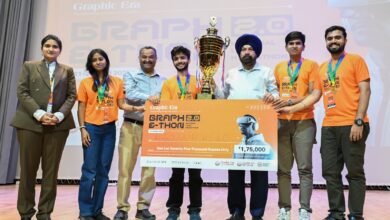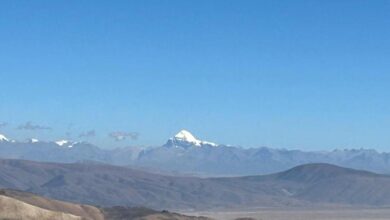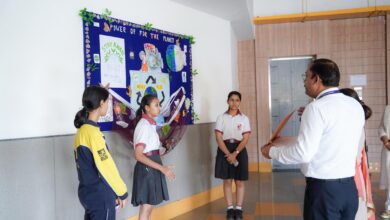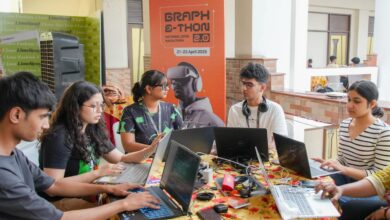A Doon ‘ Dervesh’ who saved a family after his own killing in 1947
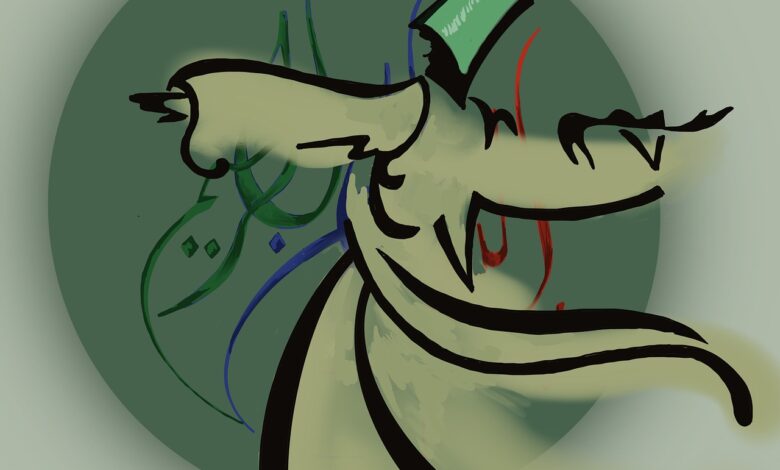
A Doon ‘ Dervesh’ who saved a family after his own killing in 1947
S.M.A.KAZMI
Dehradun, Jan 13
It was a story of a most loved ‘Dervesh’ of Dehradun valley whose dead body even saved the life of a family during the bloody communal riots that followed the partition of the country in 1947. It was a story of Manu Shah, a ‘fakir’ residing in Rajpur area in the foothills of Mussoorie where a fairly large number of Muslim families resided since the Afghan rulers were interned by the Britishers in the nineteenth century till 1947. Manu Shah, an ascetic used to live in a hut in Rajpur till September 1947. Nobody knew about his family or antecedents.
It was another incident and another story 23 years ago that how Manu Shah cropped up after 54 years in the year 2001. As a correspondent of the ‘Indian Express’ newspaper, covering newly created state of Uttaranchal, I filed a story about the attempt by Vishwa Hindu Parishad (VHP) and its’ affiliate bodies to target Muslim tailors as part of its’ strategy to malign the minority community in Kotdwar town of Pauri Garhwal. They were picketing the shops owned by Muslim tailors and dissuading Hindu women from visiting these shops on the flimsy grounds of alleged physical harassment by Muslim tailors. Two women from Kotdwar town namely Sandhaya Joshi and her sister who were prevented by Bajrang Dal members from visiting their old Muslim tailor, stoutly resisted their attempts. They argued that they had been getting their clothes stitched from their Muslim tailor since childhood and such allegations were absurd and ridiculous. The matter went to the police and local administration and the VHP people presented a complaint against Muslim tailors. Later the complainant in the matter was not found. The incident was reported by me and published in the ‘Indian Express’ newspaper under the title “Muslim tailors: RSS stitches a controversy” in November 2001. Interestingly, Sandhaya Joshi who challenged the RSS narrative was none other than wife of environmentalist and ‘Padma Bhushan’ recipient Dr. Anil. P. Joshi.
The kotdwar story for reference:-
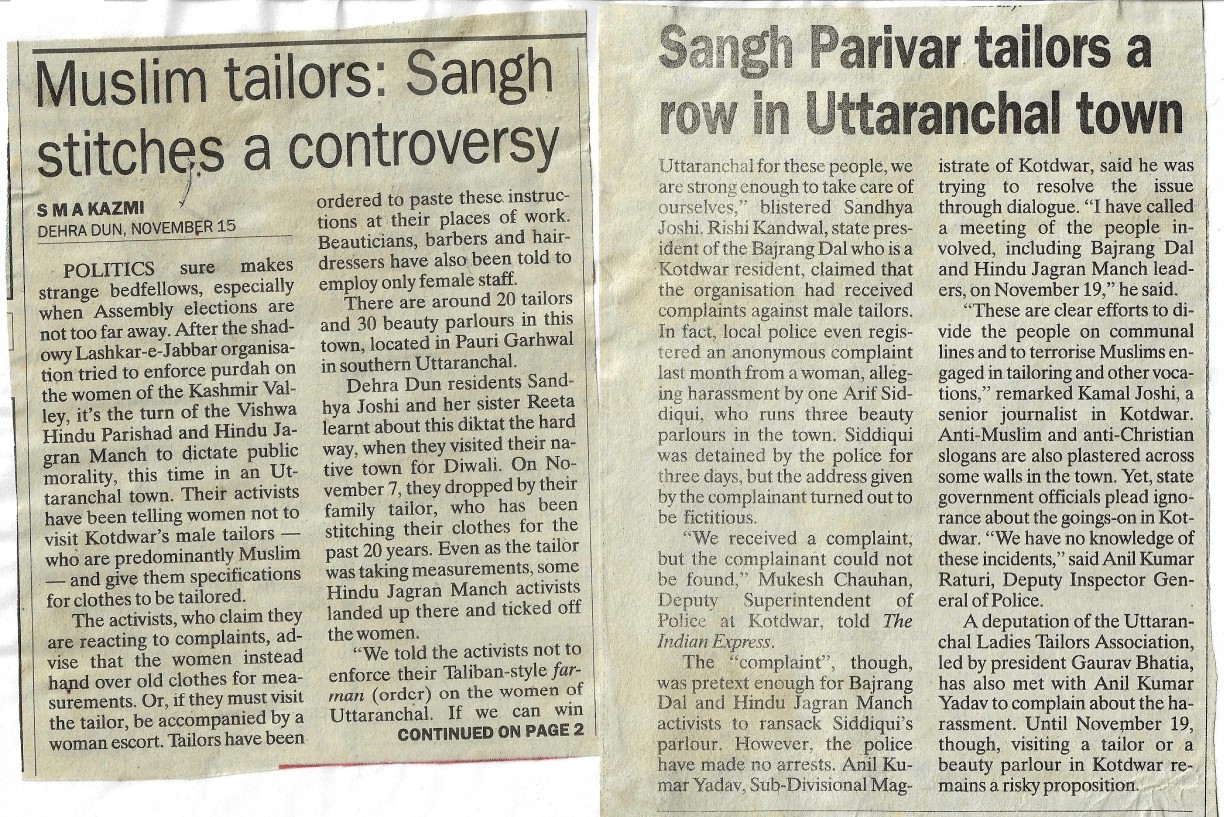
Reacting on the publication of the Kotdwar story, Anil Nauriya, a supreme court lawyer, an alumnus of The Doon School, St. Stephens’ College and grandson of former Union Minister and veteran Congress leader Mahavir Tyagi who represented Dehradun before and after partition, wrote another article titled ‘Doon’s tailor and national fabric’ on November 19, 2001 in ‘Indian Express’. He wrote beautifully about Muslim tailors of Dehradun and their contribution including stitching ‘sherwani’ of and cap of first Prime Minister Jawahar Lal Nehru. In his article, he also mentioned about Manu Shah, a ‘Fakir’ of Doon valley who used to distribute ‘elaichi’ to everyone when alive. His grandfather ‘nana’ Mahavir Tyagi who was working against communal flare up by organising his own ‘Tyagi Police’ to prevent communal riots during those horrible days saw his dead body at Roorkee.
It was during a recent meeting with Anil Nauriya in Dehradun last week that the issue of Manu Shah again came up for discussion. I told him the true story about how the family of my mother escaped to safety in those days of communal rioting and macabre violence in Dehradun town.
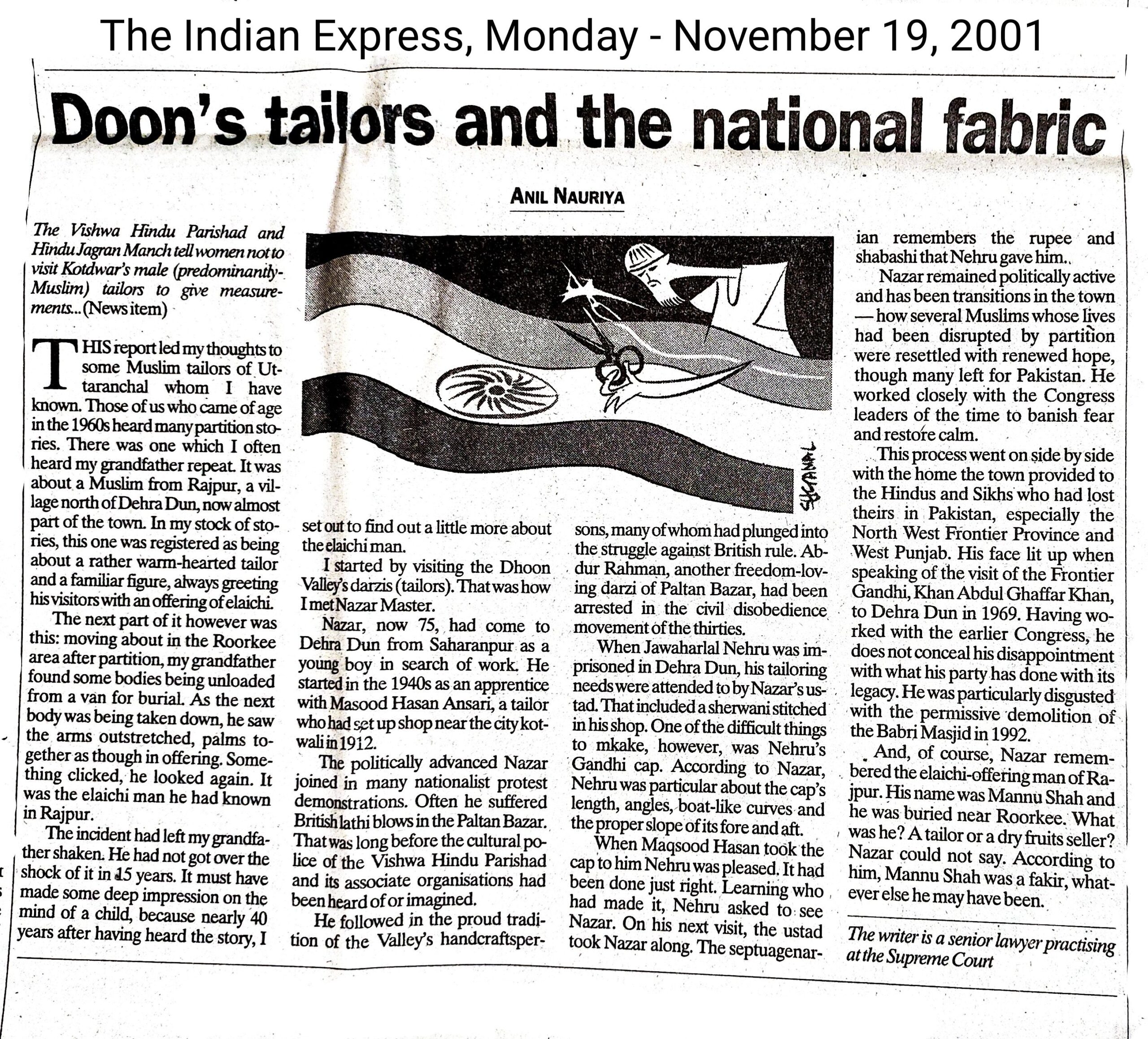
My maternal grandfather Syed Wizarat Hussain, was a head clerk in the District Courts in Dehradun prior to partition and was staying with his family at Dispensary Road then called Ajmal Khan Road. His brother-in-law Hakim Rafat Hussain was raised by his lone sister my nani since he had lost his father as a child. He went to Tabbiyya College, Delhi set up by Hakim Ajmal Khan and came back to Dehradun to practice Unani medicine in 1930’s. He was a disciple of senior Congress leader Mahavir Tyagi and was a Sewa Dal worker of Congress party who also attended the Congress session of 1937 as a Sewa Dal volunteer.
Manu Shah, a ‘fakir’ and ‘dervish’ used to live in a hut in Rajpur and was much loved by everyone in the small Dehradun town before 1947. He was considered a ‘Majzuub” ( a person one whom God has drawn towards himself, an ascetic given to divine meditation) and used to roam around in the city. Walking from Rajpur, he used to be welcome in the shops and homes where he was offered food. He used to offer ‘Elaichi’ to everyone. Without differentiating, he used to celebrate all the festivals of every community whether it was Eid, Diwali or Holi and whenever, he got anything like vegetables or clothes, he used to distribute it amongst poorer free or sometimes charging one paisa as a token during festivals when he would put up a stall. Few days before partition riots that broke out in Doon valley following the arrival of refugees from newly created state of Pakistan on September16, 1947, as a premonition, Manu Shah started running and screaming about impending bloodshed much to bewilderment of locals.
His warnings proved right when on September 16, 1947, violence started in Dehradun. As Muslims started to flee Dehradun, Manu Shah was stabbed to death on Rajpur road. Before, he breathed his last he told people who gathered around him his last wish to be buried at Piran Kaliyar Dargah near Rookee, the final resting place of revered Muslim Sufi Saint Allauddin Sabri. The news of killing of Manu Shah reached A.D. Pandit, the then District Magistrate of Dehradun, who out of respect to the slain ‘Fakir’ wanted to fulfil his last wish. But the problem was who to be entrusted with the task
My nana Syed Wizarat Hussain was staying at Dispensary Road with his entire family and there were daily lootings and killings. Fearing attack on their rented house during night, the family moved to a shop owned by a Muslim in Sarnimal Bazar who had fled the town. By next morning as the intensity of violence increased the family took shelter in Inamullah building on Gandhi Road along with other Muslim families. Most of the Muslims in the town were fleeing to the nearby districts of Saharanpur, Bijnore and rural areas for safety where the violence had not started.
My nana was planning to move his family to Manglore his native village near Roorkee but reports of attacks on Muslims fleeing Doon in the forest of Mohand desisted him from taking the risk till District Magistrate A.D. Pandit called him with the request to take the dead body of Manu Shah to Piran Kaliyar for proper Muslim burial. He was assured police protection.
Syed Wizarat Hussain and Hakim Rafat Hussain saw in this an opportunity to take their family to safety of their native village Manglore which was near Piran Kaliyar and requested the District Magistrate and the Superintendent of Police for permission, which was duly given. The dead body of Manu Shah was kept in a compound owned by a Muslim in Sarnimal Bazar. An army truck was provided to take the body to Piran kaliyar.
My mother Mehrunnisa, who was around ten year’s old then recall that the body of Manu Shah on a cot was put in a truck which was half open and her entire family sat around. Curtains were put on the truck as two armed army men with rifles and Hakim Rafat Hussain with his licensed gun sat with the driver. My mother vividly remember the scene when rioters hiding in the forest of Mohand near Dat kali tunnel charged with sticks and spears in their hands at the approaching truck believing it to be Muslim caravan on its’ way to Saharanpur. However, on being challenged by armed guards and finding it to be an army truck ran away in the forest much to be relief of the family. My mother recounted that blood was stilling coming out of the wounds of Manu Shah and the pyjama of her father who was sitting near the cot was soiled. Another occupant of that truck was Syed Rashid, father of Syed Farooq who was working with Himalayan Drug Company headquatered at Inamullah Building at that time. He went to Manglore and then went on to Muzzafarnagar.
The family safely reached Manglore and the first thing that was done was for my nana to change his pyjama which had blood stains. After leaving the family, both, my nana and Hakim Rafat Hussain took the body to Piran Kailyar to bury Manu Shah as per his last wish. While my nana returned back to join his official duties at Dehradun, the family stayed back at Manglore till one day Mahavir Tyagi along with Khurshed Lal, another senior Congress leader landed at Manglore and persuaded Hakim Rafat Hussain Faoorqui to return back to Dehradun to restart his ‘Unani’ practice which he did till his death in 2000.
Apart from my mother his older brother Farhat Hussain studied at DAV College, Dehradun and passed his medical entrance examinations in 1952 to join prestigious King George Medical College, Lucknow while her younger brother Dr. Wazahat Hussain, passed from DAV College, Dehradun and went on to become head of the Botany Department of Aligarh Muslim University (AMU) and is a senior leading taxonomist of the country.


